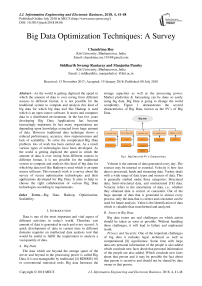Big data optimization techniques: a survey
Автор: Chandrima Roy, Siddharth Swarup Rautaray, Manjusha Pandey
Журнал: International Journal of Information Engineering and Electronic Business @ijieeb
Статья в выпуске: 4 vol.10, 2018 года.
Бесплатный доступ
As the world is getting digitized the speed in which the amount of data is over owing from different sources in different format, it is not possible for the traditional system to compute and analysis this kind of big data for which big data tool like Hadoop is used which is an open source software. It stores and computes data in a distributed environment. In the last few years developing Big Data Applications has become increasingly important. In fact many organizations are depending upon knowledge extracted from huge amount of data. However traditional data technique shows a reduced performance, accuracy, slow responsiveness and lack of scalability. To solve the complicated Big Data problem, lots of work has been carried out. As a result various types of technologies have been developed. As the world is getting digitized the speed in which the amount of data is over owing from different sources in different format, it is not possible for the traditional system to compute and analysis this kind of big data for which big data tool like Hadoop is used which is an open source software. This research work is a survey about the survey of recent optimization technologies and their applications developed for Big Data. It aims to help to choose the right collaboration of various Big Data technologies according to requirements.
Big Data, Hadoop, Optimization, Scalability
Короткий адрес: https://sciup.org/15016142
IDR: 15016142 | DOI: 10.5815/ijieeb.2018.04.06
Текст научной статьи Big data optimization techniques: a survey
Published Online July 2018 in MECS
Data is one of the most important and vital aspect of different activities in today's world. Therefore vast amount of data is generated in each and every second. A quick development of data in current time in different domains requisite an intellectual data analysis tool that would be useful to fulfill the requirement to analysis a vast quantity of data.
-
A. Big Data
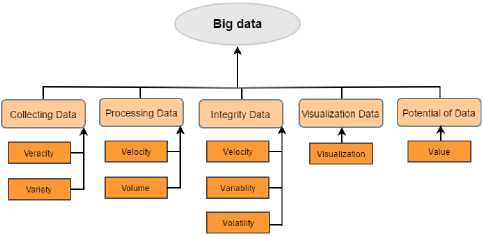
Fig.1. Big Data with 9V’s Characteristics
Volume is the amount of data generated every day. The sources may be internal or external. Velocity is how fast data is processed, batch and streaming data. Variety deals with a wide range of data types and sources of data. This is generally studied under three categories: Structured data, Semi-structured data, and unstructured [18] data. Veracity refers to the uncertainty of data, i.e., whether they obtained data is correct or consistent. Out of the huge amount of data that is generated in almost every process, only the data that is correct and consistent can be used for future analysis. Value is the identification of data which is valuable than transformed and analyzed.
-
B. Issues in Big Data
Big data issues are real challenges on which action should be taken as soon as possible. Without handling these challenges, it will lead to failure and unpleasant result.
Privacy and Security: One of the important challenges of big data it includes legal, technical as well as computational [8] significance. Some time with large data-sets personal information of the people is also added which conclude new facts about that personal information of the people are also added. Which conclude new facts about that person and it may be possible the fact about that person is secretive and should not be shared by data owner or that person.
Accessing and Sharing of Information: If the data in the enterprises are used to create precise decision it should be complete accurate and in timely manner, which increases the complexity of governance process and data management.
Analytical Challenges: One of the key job of big data is to do analysis on huge data. These data are structured, semi-structured and unstructured and advanced skills is needed to process these kind of data, more over decision is made upon the data which is obtained that is decision making.
Scalability: Big data scalability issue leads to cloud computing. There is a high end resources sharing involved in it which is expensive and also challenges to efficiently run various jobs so that the goal of each work load cost effectively. System failure is also dealt efficiently while working on large data clusters. These combined factors make it di cult to write program, even machine learning complex tasks. Changes are being made in technologies used, solid state drive is used in place of hard drive and phase change technologies are not performing as good as sequential and random transfer. Thus it’s a big question that what kind of storage devices should be used to store data.
Quality of Data: Collecting and storing huge amount of data are costly; if more data is stored for predictive [12] analysis and decision making in business then it will yield better results. Big data has interest in having quality rather than unused data so that better conclusion and result can be drawn. This further arise the question on whether the data is relevant or not, can the stored data be accurate enough to produce right result, how much data would be enough in making decision.
Heterogeneous Data: In recent days data there is increase in unstructured data from social media, to record meetings, emails, fax transfer, black box data and more. Working with unstructured data is costly and di cult to store. Converting unstructured data into structured is not easy. Structured [18] data is highly organized and well managed data on the other hand unstructured data is unorganized and raw.
Optimization: Finding the alternative way to achieve the highest performance in cost effective manner and under given limitation by mostly utilizing the desired factors. In comparison, maximization is the process of attaining highest or maximum performance deprived of cost or expenditure. Practice of optimization is restricted when there is shortage of information and lack of time to estimate what information is obtainable.
-
C. Motivation
The world is changing rapidly with time it is growing towards the hi-tech era where technology is playing a great role. As the world is rapidly pacing into hi-tech era one thing has also grown tremendously within a few years that is data. Today data has rose from terabytes to zettabytes of data. As data is growing tremendously in a rapid velocity and different varieties and structure, efficient tools are needed to organize these huge data known as big data. Some of the tools are already playing vital roles in efficiently working with big data, one such tool is hadoop. As hadoop is a new technology there are still some areas in hadoop which can be better optimized to increase the efficiency and throughput of hadoop ecosystem.
-
D. Big data Applications
Some of the major applications of big data have been summed up in the following section and also represented diagrammatically in Figure 2.
Big data in Banking: Big Data has delivered opportunities to bank to understand the scenario due to maintain the re-active nature of the data for convey significance to users along with the confidentiality and safety of sensitive information.
Big data in Finance sector: Financial amenities have embraced big data analytics [14] to notify improved investment decisions with steady revenues. Big data is being used in a collective number of applications, such as employee observing and surveillance, developing algorithms to estimate the track of financial markets.
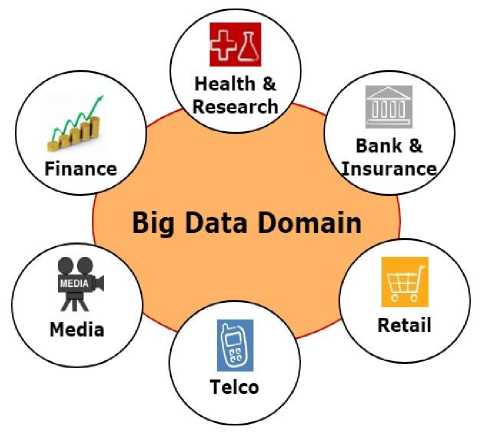
Fig.2. Application of big data
Big data in Telecom: Telecom companies require a proper searching and analysis [15] of data to get deeper understanding into customer behavior, their service usage preferences, patterns and real-time interests. Here is where Big Data comes in.
Big data in retail sector: Merchants use Big Data to provide customer custom-made shopping involvements. Exploring how a customer came to make a purchase, or the road to purchase, is one way big data techiest making a spot in marketing. 66% of vendors have made monetary improvements in customer relationship organization through big data.
Big data in HealthCare: The data coming from electronic medical care (EMR) system includes both unstructured and structured [17] data from pathology reports, physician notes etc. These data are analyzed with the target to improving patient health care, reducing expenses and improve patient’s health.
-
II. Hadoop Ecosystem
NameNode control the HDFS. It does not hold any actual file data; rather it holds all file system metadata for the cluster. Such as name of the file and its path, what blocks makeup a file and where those blocks are located in the cluster. It holds the health of each and every data node. Backup node or secondary name node connects to the name node (occasionally) and take a copy metadata store into Name Node’s memory. If the NameNode dies, the files preserve by secondary NameNode used to recover the NameNode. DataNode sends heartbeats to the NameNode every 3 seconds to inform the NameNode that it is still alive. Every 10th heart beat is a block report, DataNode tells the NameNode about all the blocks contains within it.
Node Manager takes care of the computational nodes in the Hadoop cluster. It determines the health of the executing nodes. It keeps a track of the resources available and sends the track report to Resource manager. Journal Node is used to keep the state synchronized between the NameNode and Backup Node or standby NameNode. When any modification is performed by the NameNode, it informs the journal node about the modification. The secondary node is able to read the update from the Journal node.
-
A. Scalability
Scalability is a characteristic of a system or function that defines its ability to manage and accomplish under an improved or increasing load. A system that scales well will be capable to keep or even increase its level of performance or productivity when verified by bigger operational demands. Figure 3 demonstrate the Vertical and Horizontal Scaling.
Vertical Scalability:
It is the process of increasing the processing power and capacity of the hardware or software by adding several resources to make it work more efficiently and faster.
|
Pros |
Cons |
|
All data is in a particular device. No need to manage numerous entities. |
The problem is the cost efficiency. A powerful machine having huge number of CPU and higher RAM capacity is expensive than a set of small size entities. |
|
Reduced software costs. |
Limited scope of upgradeability in the future. |
|
Implementation isn’t difficult. |
The overall cost of implementing is really expensive. |
Horizontal Scalability:
It is the capability to link several individuals so that they perform as a solo logical entity.
Pros
All is in smaller pieces so program can process them very fast with parallel job distribution among all entities.
Easy to upgrade
Cons
The problem is about managing those instances and the complex distributed architecture.
The licensing fees are more
Much cheaper compared to scaling-up
The licensing fees are more
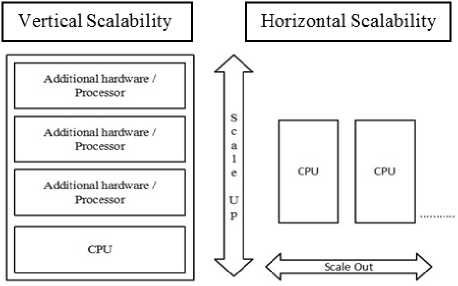
Fig.3. Vertical and Horizontal Scaling
-
B. Processing capabilities
SQL:
Structured Query Language is used to be in communication with a database. "Select", "Insert", "Update", "Delete", "Create", and "Drop" are the standard SQL commands which are used to accomplish transactions with a database.
No SQL (Not Only SQL):
These are non-relational, open source, distributed databases. Structured, unstructured and semi-structured data can be deal with the help of No SQL. It has scale out architecture instead of the monolithic architecture of relational databases. Insertion of data in the NO SQL database, do not need a predefined schema. This supports faster development, easy code integration and require less database administration.
-
C. Optimization
Optimization is the act of design and developing systems in such a way that it can take greatest advantage of the available resources represented in Figure 4. Optimization of applications [23] can be done to take advantage from the huge amount of memory space present on a specific computer, or the hardware speed, or the processor being used. Optimization is to done to attain the finest strategy relative to a set of selected constraints which include maximizing factors such as efficiency, productivity, reliability, longevity, strength, and utilization.
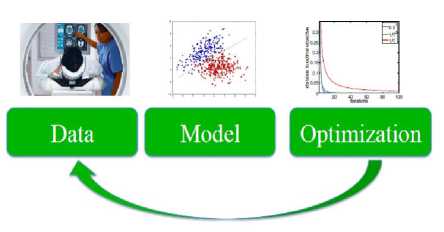
Fig.4. Optimization process
-
D. Mapreduce
Hadoop accomplishes its operations with the help of the MapReduce model, which comprises two functions namely, a mapper and a reducer [22].
The Mapper function is responsible for mapping the computational subtasks to different nodes and also responsible for task distribution, load balancing and managing the failure recovery. The Reducer function takes the responsibility of reducing the responses from the compute nodes to a single result. The reduce component has the responsibility to aggregate all the elements together after the completion of the distributed computation. The overall function of the map-reduce process is explained in Figure 5.
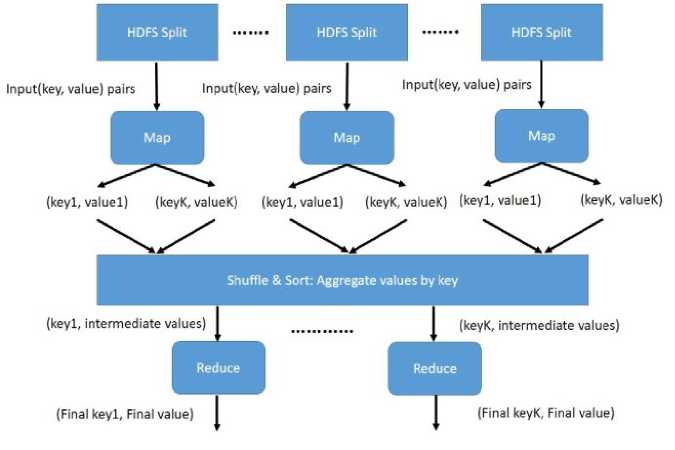
Fig.5. Overview of the Map-Reduce process
-
III. Related Works
The below Table [1] present a brief idea about some optimization process and big data analytics. It also discusses about the characteristics of various optimization techniques and how these techniques are helpful for improving the decision making process in big data domains.
The above Table 1 describes the objective of the paper like some paper have worked on the optimization area of big data tools, the methods used to do optimization such as some techniques which have been defined in this paper such as Flex allocation scheduler, Recursive Chunk Division (RCD) for Optimal Pipelining, Optimal
Parallelism-Concurrency-Pipelining (PCP), Merging of several small files and prefetching for structurally-related small files [21] and grouping of files and prefetching for logically-related small files and the application domain in which these have been implemented.
The above Table 2 describes the survey paper and their respective technique and algorithm used to achieve the objective and the application in which it has been performed.
The Presented survey paper has analyzed the previously explained research work according to the emphasis given on the enhancement techniques provided on it, represented in the Table 3.
Table 1. Optimization Implemented
|
Author |
Objective |
Technique/ Algorithm |
Application |
|
Joel Wolf et.al[6] |
FLEX: A Slot Apportionment Scheduling Optimizer for MapReduce Jobs |
Flex allocation scheduler |
Job Scheduling |
|
Bo Dong et.al[7] |
Determine an optimized method for loading and retrieving small files on cloud storage |
Merging of several small files and prefetching for structurally-related small files and grouping of files and prefetching for logically-related small files |
Small File distribution |
|
Esma Yildirim et al.[8] |
Application-Level Optimization through Pipelining, Parallelism and Concurrency. |
Recursive Chunk Division (RCD) for Optimal Pipelining, Optimal Parallelism-Concurrency Pipelining (PCP) |
Map reduce optimization |
|
Maumita Bhattacharya et.al[9] |
An evolutionary algorithm is used to enhance the ability to cope up with the difficulties of great dimensionality and scatteredness of data. |
The recommended prototype uses informed genetic operators to present diversity by increasing the range of search procedure at the cost of redundant less promising associates of the population. |
Ensuring constructive population diversity |
|
Kostas Kolomvatsos et.al [10] |
Effective Time Optimized Arrangement for Advanced Analytics in Big Data. |
Two consecutive decision building prototypes are used to conduct the entering partial results. The first prototype is centered on a finite horizon time-optimized model and the second one is built on an infinite horizon optimally scheduled model. |
Improve the performance of querying big data clusters. |
Table 2. Optimization Survey
|
Author |
Objective |
Key fields |
|
Marisiddanagouda. M et al.[7] |
Improve the performance of hadoop mapreduce, overcome the limitations of the Map-Reduce framework, decrease the performance degradation because of interaction and heavy dependency across different MapReduce phases |
Optimization methods, MapReduce Performance. |
|
Dilpreet Singh et al.[13] |
Evaluates the advantages and drawbacks of different hardware platforms available for big data analytics. |
Graphics processing units, scalability, k-means clustering, real-time processing, big data platforms |
|
Shivaraj B. G. et al. [11] |
Handle Multiple Jobs in Hadoop Cluster. Resources handled by MapReduce schedulers assigning resources in the form of MapReduceTasks. |
HDFS, MapReduce, Schedulers optimization |
|
Sunith Bandaru et al.[1] |
Knowledge detection in multi-objective optimization using data mining techniques present real-world optimization difficulties where numerous objectives are optimized at the same time with respect to several variables. |
Multi-objective optimization, Descriptive statistics, Visual data mining process, Machine learning, Knowledge-driven optimization |
|
Hao Zhang et al.[18] |
Design ideologies for in-memory data organization, handling, and practical procedures for planning and implementing efficient and high-performance in-memory systems. |
Primary memory, DRAM, relational databases, distributed databases, query processing |
Table 3. Enhancement Techniques used in Optimization Process
Список литературы Big data optimization techniques: a survey
- Bandaru, S., Ng, A. H., and Deb, K. Data mining methods for knowledge discovery in multi-objective optimization: Part a-survey. Expert Systems with Applications 70 (2017), 139-159.
- Bhattacharya, M., Islam, R., and Abawajy, J. Evolutionary optimization: a big data perspective. Journal of network and computer applications 59 (2016), 416-426.
- Dong, B., Zheng, Q., Tian, F., Chao, K.-M., Ma, R., and Anane, R. An optimized approach for storing and accessing small files on cloud storage. Journal of Network and Computer Applications 35, 6 (2012), 1847-1862.
- Gu, R., Yang, X., Yan, J., Sun, Y., Wang, B., Yuan, C., and Huang, Y. Shadoop: Improving mapreduce performance by optimizing job execution mechanism in hadoop clusters. Journal of parallel and distributed computing 74, 3 (2014), 2166-2179.
- Hua, X., Wu, H., Li, Z., and Ren, S. Enhancing throughput of the hadoop distributed file system for interaction-intensive tasks. Journal of Parallel and Distributed Computing 74, 8 (2014), 2770-2779.
- Kolomvatsos, K., Anagnostopoulos, C., and Hadjiefthymiades, S. An efficient time optimized scheme for progressive analytics in big data. Big Data Research 2, 4 (2015), 155-165.
- Mr. Marisiddanagouda. M, M. R. M. Survey on performance of hadoop map-reduce optimization methods. International Journal of Recent Research in Mathematics Computer Science and Information Technology 2 (2015), 114-121.
- Nagina, D., and Dhingra, S. Scheduling algorithms in big data: A survey. Int.J. Eng. Comput. Sci 5, 8 (2016).
- Nghiem, P. P., and Figueira, S. M. Towards efficient resource provisioning in mapreduce. Journal of Parallel and Distributed Computing 95 (2016), 29-41.
- Rumi, G., Colella, C., and Ardagna, D. Optimization techniques within the hadoop eco-system: A survey. In Symbolic and Numeric Algorithms for Scientific Computing (SYNASC), 2014 16th International Symposium on (2014), IEEE, pp. 437-444.
- Shivaraj B. G., N. N. Survey on schedulers optimization to handle multiple jobs in hadoop cluster. International Journal of Science and Research 4 (2013), 1179-1184.
- Shu-Jun, P., Xi-Min, Z., Da-Ming, H., Shu-Hui, L., and Yuan-Xu, Z. Optimization and research of hadoop platform based on fifo scheduler. In MeasuringTechnology and Mechatronics Automation (ICMTMA), 2015 Seventh International Conference on (2015), IEEE, pp. 727-730.
- Singh, D., and Reddy, C. K. A survey on platforms for big data analytics. Journal of Big Data 2, 1 (2015), 8.
- Tamboli, S., and Patel, S. S. A survey on innovative approach for improvement in efficiency of caching technique for big data application. In Pervasive omputing (ICPC), 2015 International Conference on (2015), IEEE, pp. 1-6.
- Ur Rehman, M. H., Liew, C. S., Abbas, A., Jayaraman, P. P., Wah, T. Y., and Khan, S. U. Big data reduction methods: a survey. Data Science and Engineering 1, 4 (2016), 265-284.
- Wolf, J., Rajan, D., Hildrum, K., Khandekar, R., Kumar, V., Parekh, S., Wu, K.-L., et al. Flex: A slot allocation scheduling optimizer for mapreduce workloads. In Proceedings of the ACM/IFIP/USENIX 11th International Conference on Middleware (2010), Springer-Verlag, pp. 1-20.
- Yildirim, E., Arslan, E., Kim, J., and Kosar, T. Application-level optimization of big data transfers through pipelining, parallelism and concurrency. IEEE Transactions on Cloud Computing 4, 1 (2016), 63-75.
- Zhang, H., Chen, G., Ooi, B. C., Tan, K.-L., and Zhang, M. In-memory big data management and processing: A survey. IEEE Transactions on Knowledge and Data Engineering 27, 7 (2015), 1920-1948.
- Jena, Bibhudutta, et al. "Name node performance enlarging by aggregator based HADOOP framework." I-SMAC (IoT in Social, Mobile, Analytics and Cloud)(I-SMAC), 2017 International Conference on. IEEE, 2017.
- Yadav, Kusum, Manjusha Pandey, and Siddharth Swarup Rautaray. "Feedback analysis using big data tools." ICT in Business Industry & Government (ICTBIG), International Conference on. IEEE, 2016.
- Jena, Bibhudutta, et al. "A Survey Work on Optimization Techniques Utilizing Map Reduce Framework in Hadoop Cluster." International Journal of Intelligent Systems and Applications 9.4 (2017): 61.
- Chakraborty, Sabyasachi, et al. "A Proposal for High Availability of HDFS Architecture based on Threshold Limit and Saturation Limit of the Namenode." (2017).
- Kanaujia, Pradeep Kumar M., Manjusha Pandey, and Siddharth Swarup Rautaray. "Real time financial analysis using big data technologies." I-SMAC (IoT in Social, Mobile, Analytics and Cloud)(I-SMAC), 2017 International Conference on. IEEE, 2017.

